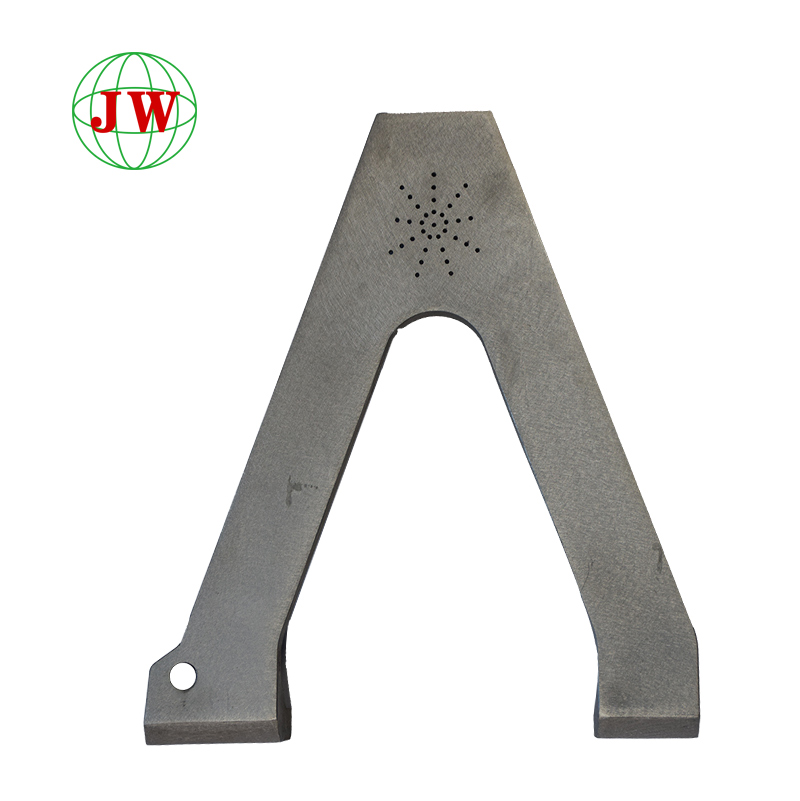
What are cast aluminum parts and cast aluminum parts, and what are the differences between the two?
2023-04-28 13:30
Cast aluminum alloy has some advantages that other castings cannot compare with, such as aesthetics, light weight, and corrosion resistance, making it widely favored by users. Especially since the lightweight of automobiles, cast aluminum alloy castings have been widely used in the automotive industry.
The density of cast aluminum alloy is lower than that of cast iron and cast steel, while the specific strength is higher. Therefore, using aluminum alloy castings under the same load conditions can reduce the weight of the structure. Therefore, aluminum alloy castings are widely used in the aviation industry, power machinery, and transportation machinery manufacturing. Aluminum alloy has good surface gloss and good corrosion resistance in the atmosphere and fresh water, making it widely used in the manufacturing of civilian utensils. Pure aluminum has good corrosion resistance in oxidizing acid media such as nitric acid and acetic acid, so aluminum castings also have certain applications in the chemical industry.
Pure aluminum and aluminum alloys have good thermal conductivity, and are suitable for manufacturing heat exchange devices used in chemical production, as well as parts that require good thermal conductivity in power machinery, such as cylinder heads and pistons of internal combustion engines. Casting aluminum alloy castings have numerous advantages, making them the development direction of the casting industry and one of the most favored casting products for procurement customers. In the future, with the progress of aluminum alloy casting technology, it will showcase its charm on a larger stage.
![]()
1、 Common Defects and Analysis of Aluminum Castings

Characteristics of oxide slag inclusion defect: The oxide slag is mostly distributed on the upper surface of the casting, at the corners where the mold is not ventilated. The fracture surface is mostly gray white or yellow, which can be found through X-ray fluoroscopy or mechanical processing, as well as during alkaline washing, acid washing, or anodizing
(1) Cause of occurrence:
1. The furnace material is not clean and the amount of recycled material used is too high
2. The slag in the alloy liquid is not completely removed
3. Improper pouring operation, resulting in slag inclusion
4. Insufficient standing time after refining and metamorphism treatment.
(2) Prevention method:
1. The furnace material should be blown through sand, and the amount of recycled material used should be appropriately reduced
2. Improve the design of the pouring system to enhance its slag blocking ability
3. Use appropriate flux to remove slag
4. During pouring, it should be smooth and attention should be paid to slag blocking
5. After refining, the alloy liquid should be left to stand for a certain period of time before pouring
2、 Characteristics of Pore and Bubble Defects
The aluminum casting process makes the pores in the wall generally circular or elliptical, with a smooth surface, usually shiny oxide skin, and sometimes oil yellow. Surface pores and bubbles can be detected by sandblasting, while internal pores and bubbles can be detected by X-ray fluoroscopy or mechanical processing. The pores and bubbles appear black on the X-ray film.
Cause of occurrence:
1. The pouring of alloy is unstable and involves gas
2. Organic impurities (such as coal shavings, grass root manure, etc.) are mixed in the mold (core) sand
3. Poor ventilation of mold and sand core
4. There are shrinkage holes on the surface of the cold iron
5. Poor design of the pouring system
Prevention method:
1. Properly control the pouring speed to avoid getting caught in gas.
2. Organic impurities should not be mixed in the mold (core) sand to reduce the gas generation of the molding material
3. Improve the exhaust capacity of core sand
4. Correct selection and treatment of cold iron
5. Improve the design of the pouring system
3、 Shrinkage defect characteristics
Shrinkage and looseness in aluminum castings generally occur at the thicker part of the root of the flying riser near the inner sprue, at the thickness transition of the wall, and at the thin-walled part with a large plane. In the as-cast state, the fracture surface is gray, and the light yellow color is gray white, light yellow, or gray black after heat treatment. Severe filamentous shrinkage and looseness on the X-ray film can be detected through X-ray, fluorescence, and low-power fracture inspection methods.
(1) Cause of occurrence
1. Poor feeding effect of the riser
2. The gas content of the furnace material is too high
3. Overheating near the inner runner
4. The sand mold has too much moisture and the sand core has not been dried
5. Coarse alloy grains
6. Improper position of aluminum castings in the mold
7. The pouring temperature is too high and the pouring speed is too fast.
(2) Prevention methods
1. Add molten metal from the riser and improve the design of the riser
2. The furnace material should be clean and free from corrosion
3. Install a riser at the shrinkage area of the aluminum casting, and place a cold iron or cold iron in combination with the riser
4. Control the moisture content of the molding sand and dry the sand core
5. Take measures to refine the product grain
6. Improve the position of castings in the mold, reduce pouring temperature and speed
Get the latest price? We'll respond as soon as possible(within 12 hours)












